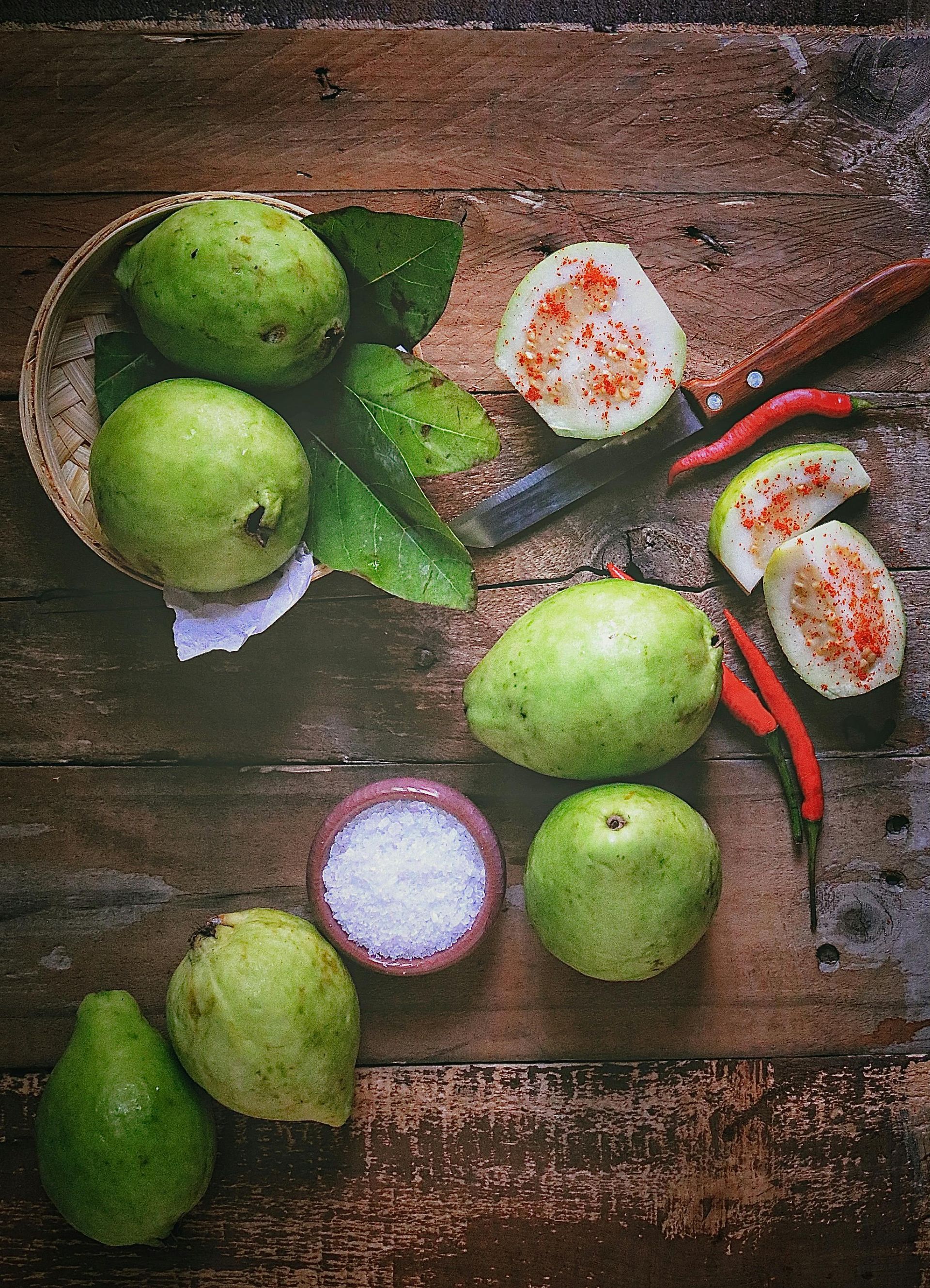How To Grow Guava
How to Grow a Guava Tree: A Simple Guide
Guava trees are popular for their sweet, fragrant fruit and are relatively easy to grow if you live in a warm climate. Whether you’re planting in your garden or a large container, here’s how you can grow a guava tree successfully.
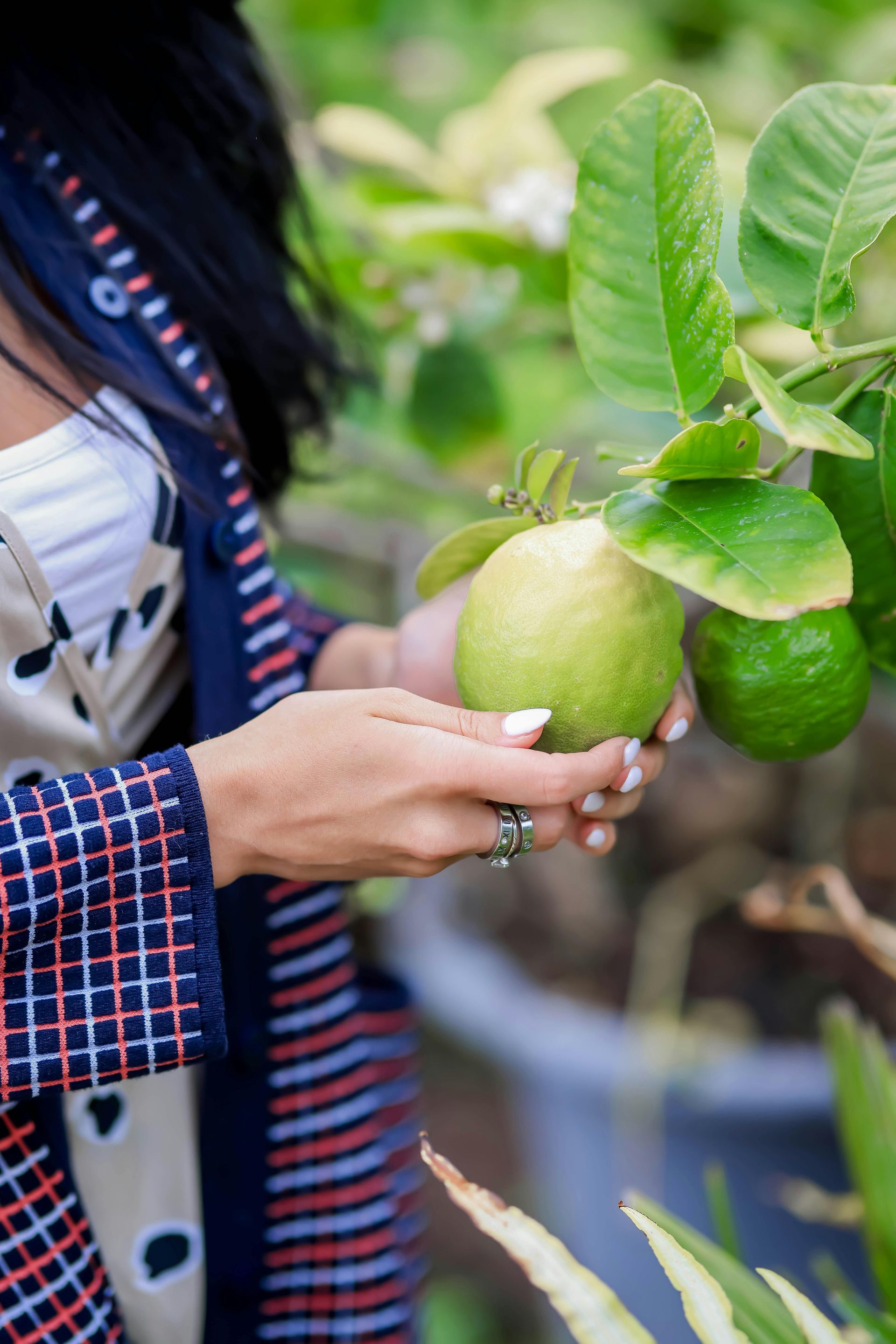
1. Understanding Guava Trees
Guava trees are native to tropical regions but can grow in subtropical climates as well. They do best in warm, frost-free areas and can grow up to 20 feet tall, though they can be kept smaller with pruning. Guava trees are fast-growing and may start producing fruit in just 2-4 years if grown from seeds, or even sooner if grown from cuttings or grafted plants.
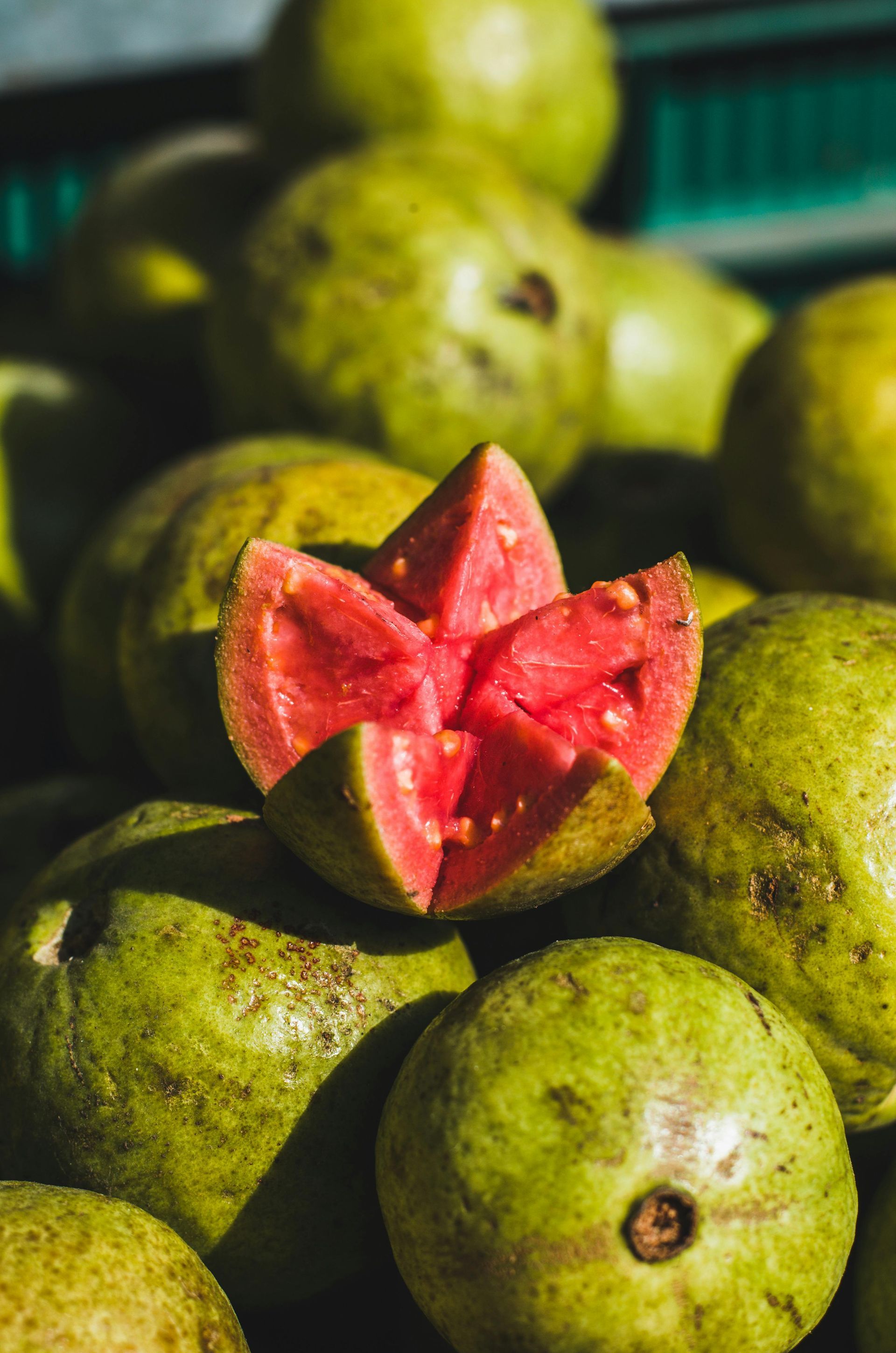
2. Choosing a Variety and Growing Method
There are several varieties of guava, so choose one that fits your needs and climate.
Common Varieties: Pink guava, white guava, and strawberry guava are popular choices. Each has a slightly different taste, color, and size.
Growing from Seed vs. Cuttings: Guava trees can be grown from seeds, but it’s faster to grow them from cuttings or grafted plants. Trees grown from cuttings or grafts will produce fruit sooner than seed-grown trees.
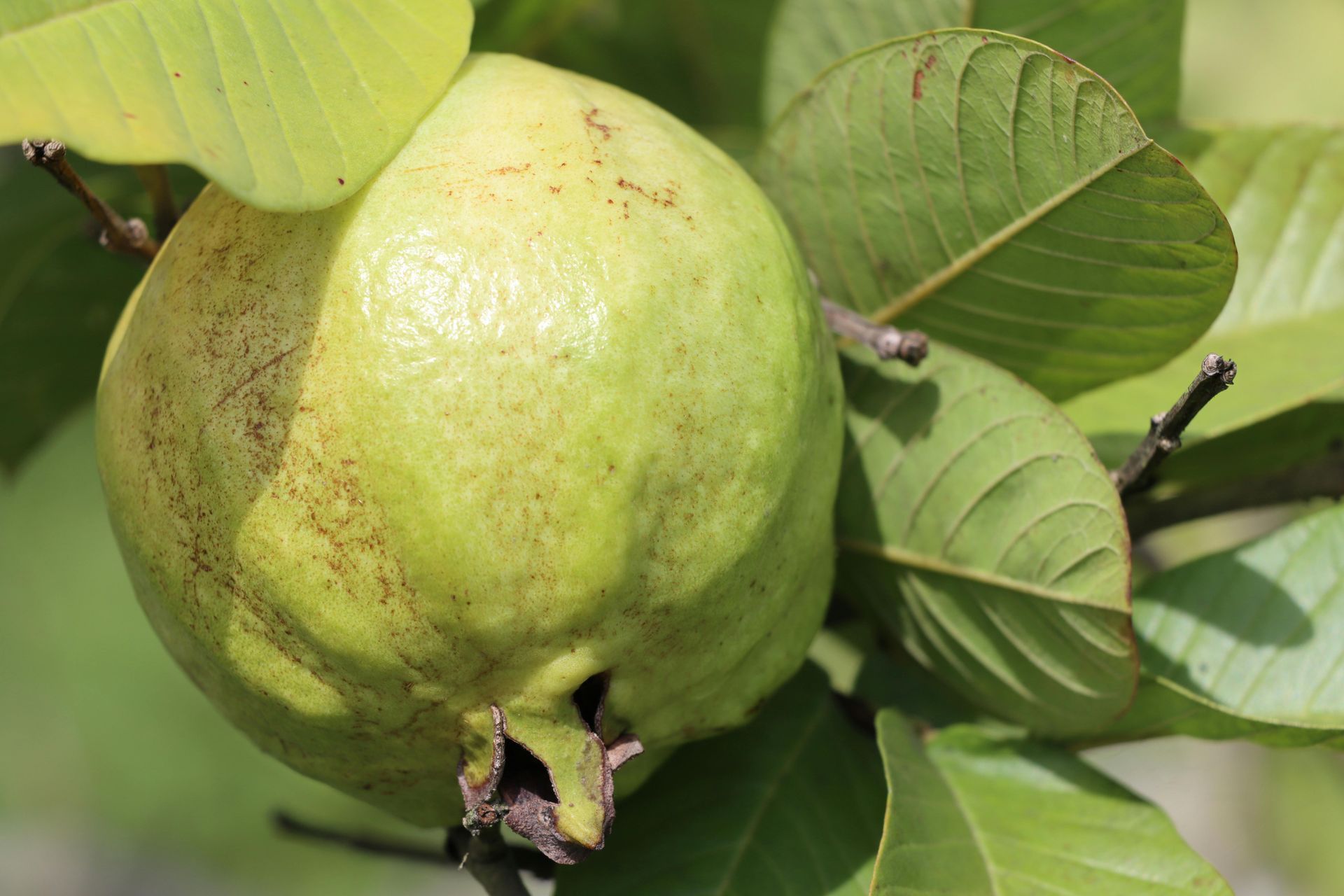
3. Finding the Right Spot for Your Guava Tree
Guava trees are adaptable but thrive best in a spot that meets these conditions:
Sunlight: Plant in a location that gets full sun for at least 6-8 hours a day. This helps the tree grow well and produce plenty of fruit.
Soil: Guava trees do best in well-draining soil that’s rich in organic matter. They tolerate a wide range of pH levels but prefer slightly acidic to neutral soil (pH 5.5–7.0).
Spacing: If planting more than one guava tree, space them at least 10-15 feet apart to allow for full growth.
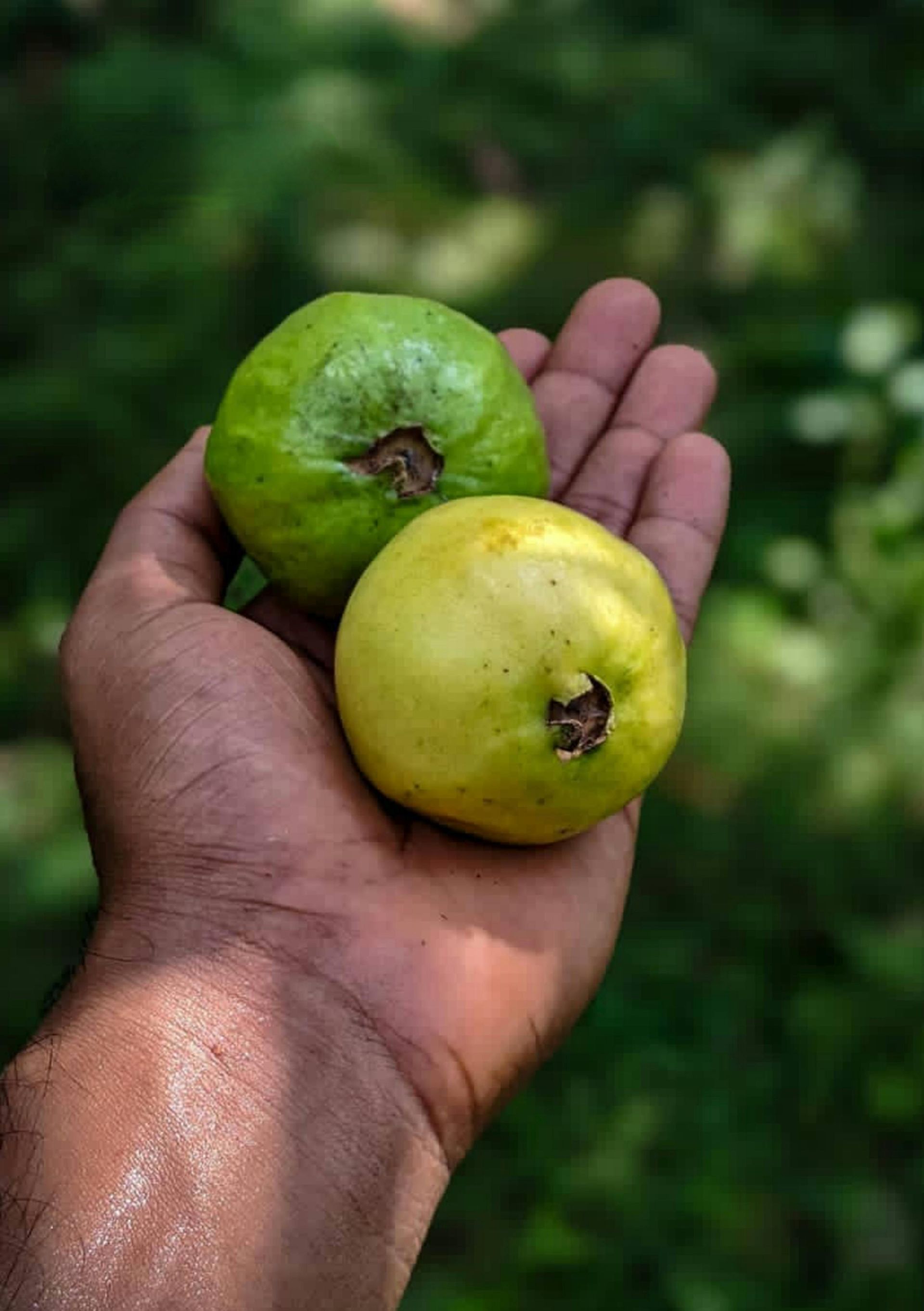
4. Planting the Tree
Once you have the right spot, follow these steps to plant your guava tree:
Prepare the Hole: Dig a hole that’s twice as wide and about as deep as the root ball.
Planting: Place the tree in the hole, making sure it’s straight. Fill the hole with soil, pressing down gently to remove air pockets.
Watering: Water the tree thoroughly after planting to help settle the soil around the roots.
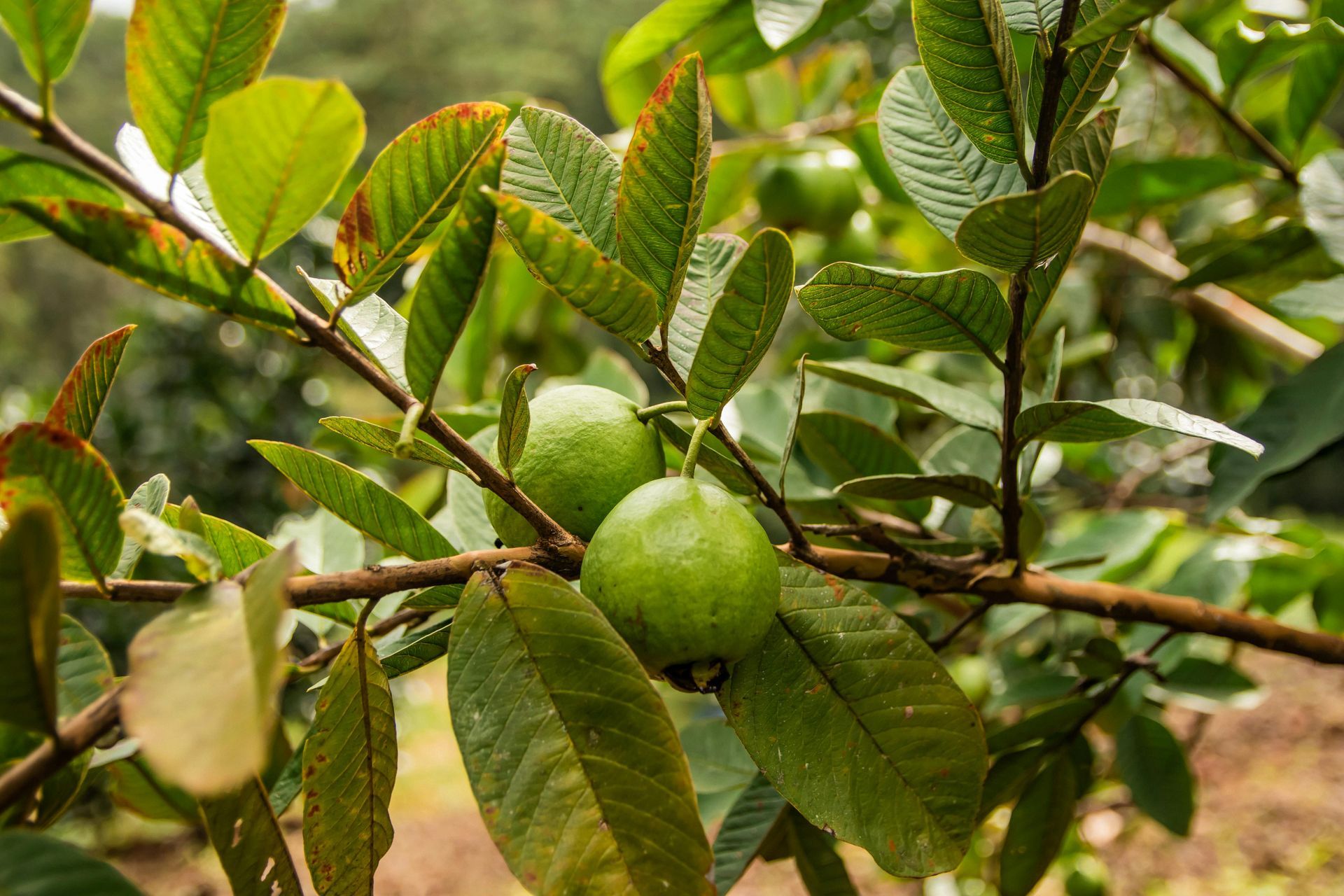
5. Taking Care of Your Guava Tree
Guava trees don’t require much maintenance, but they need consistent care, especially when young.
Watering: Water the tree regularly, especially during dry spells. Guava trees are drought-tolerant once established but produce more fruit with regular watering.
Fertilizing: Feed the tree every three months with a balanced fertilizer, especially in the growing season. Adding compost can also improve soil quality.
Mulching: Place mulch around the base of the tree to retain soil moisture, reduce weeds, and keep the roots cool. Use organic mulch, but keep it away from the trunk to avoid rot.
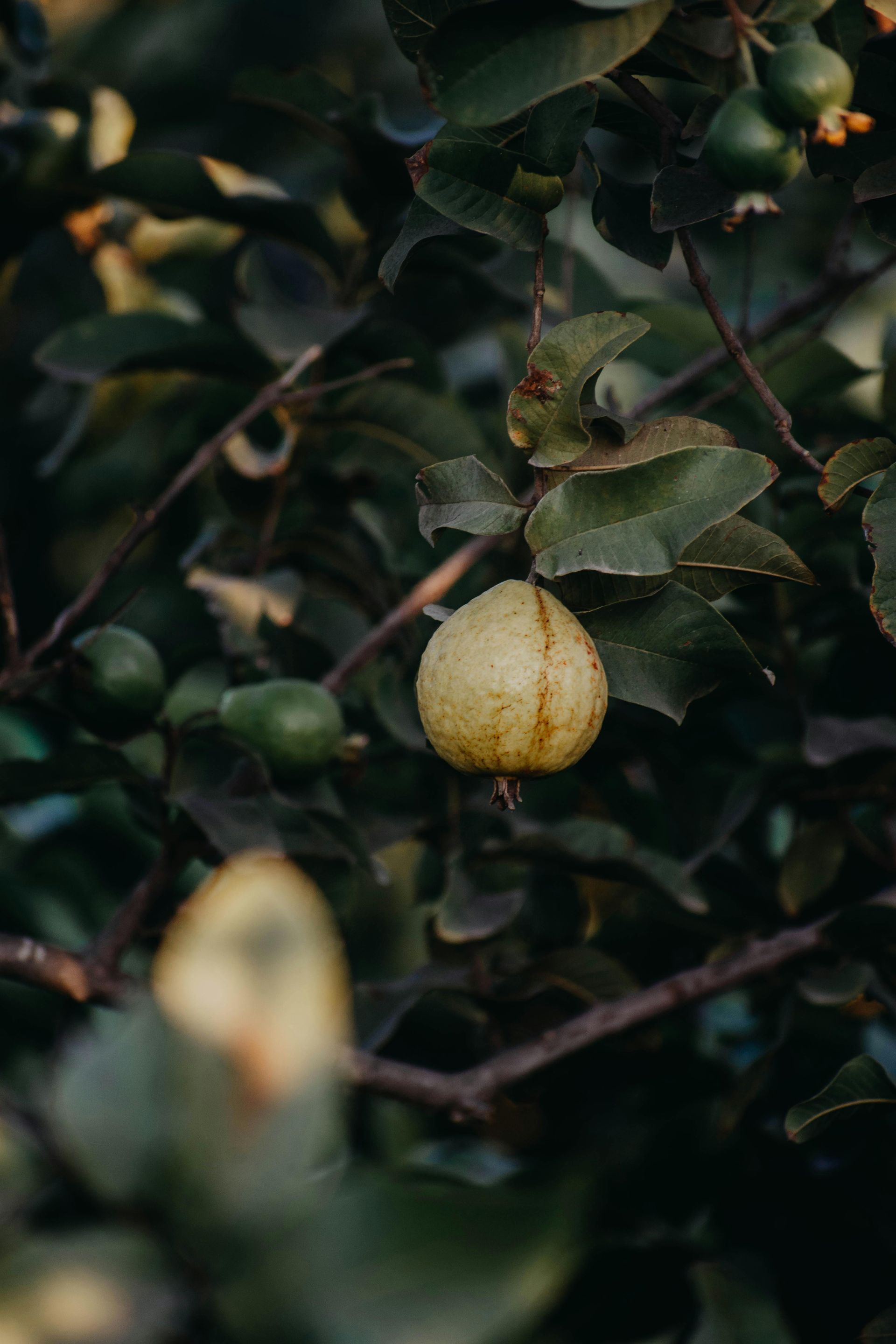
6. Pruning for Healthy Growth
Pruning guava trees helps them stay healthy and productive.
Shaping: Prune young trees to shape them, encouraging a strong central trunk and open branches. This helps the tree grow more evenly and makes harvesting easier.
Removing Deadwood: Trim away dead, damaged, or crowded branches to improve airflow and reduce disease risks. Prune lightly after the fruiting season to promote new growth.
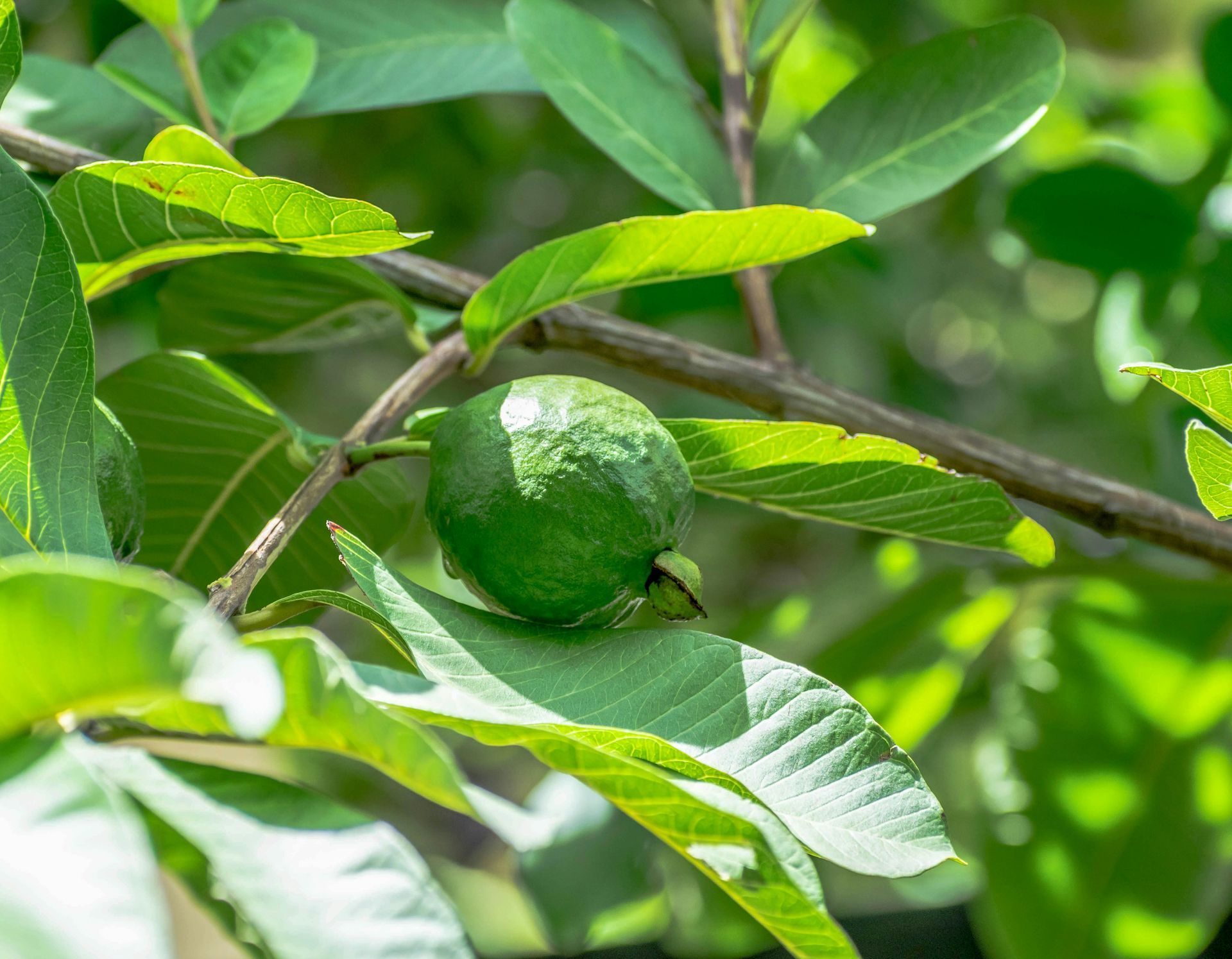
7. Dealing with Common Pests and Diseases
Guava trees are usually resilient but can face some pest and disease issues. Here’s how to prevent them:
Pests: Common pests include fruit flies, aphids, and scale insects. Use natural insecticides or neem oil to keep them under control.
Diseases: Fungal issues can occur, especially in humid climates. Make sure the tree has good airflow and avoid overwatering to reduce the risk of rot and mildew.
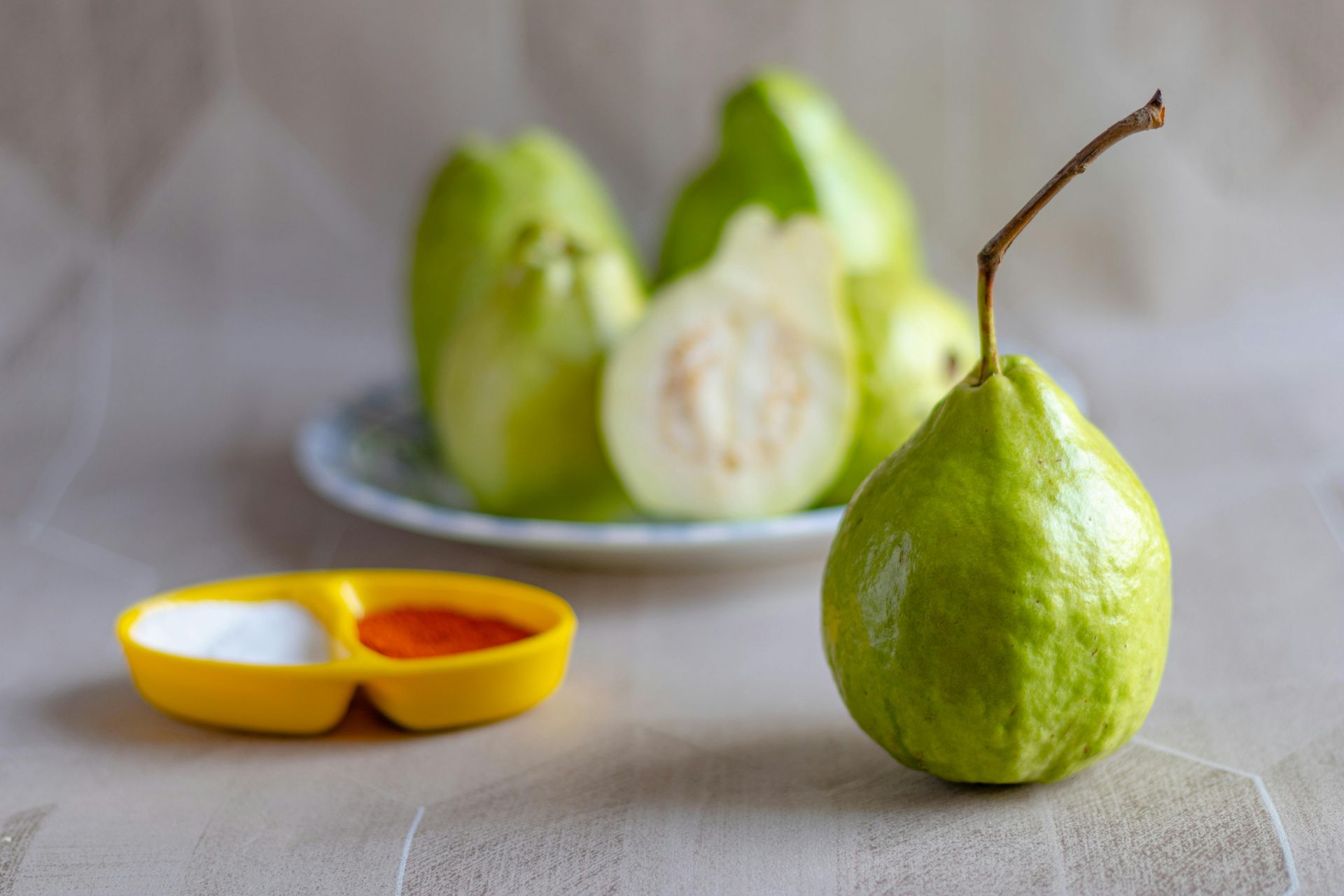
8. When to Expect Fruit and How to Harvest
Guava trees can produce fruit in just a few years, depending on the growing method and care.
Fruiting Season: Guava trees often bloom in spring and produce fruit from late summer to early fall, though this can vary by climate.
Harvesting: Pick guavas when they’re slightly soft and aromatic. The skin color will vary by variety but often becomes yellow or light green when ripe. Be gentle when harvesting to avoid bruising the fruit.
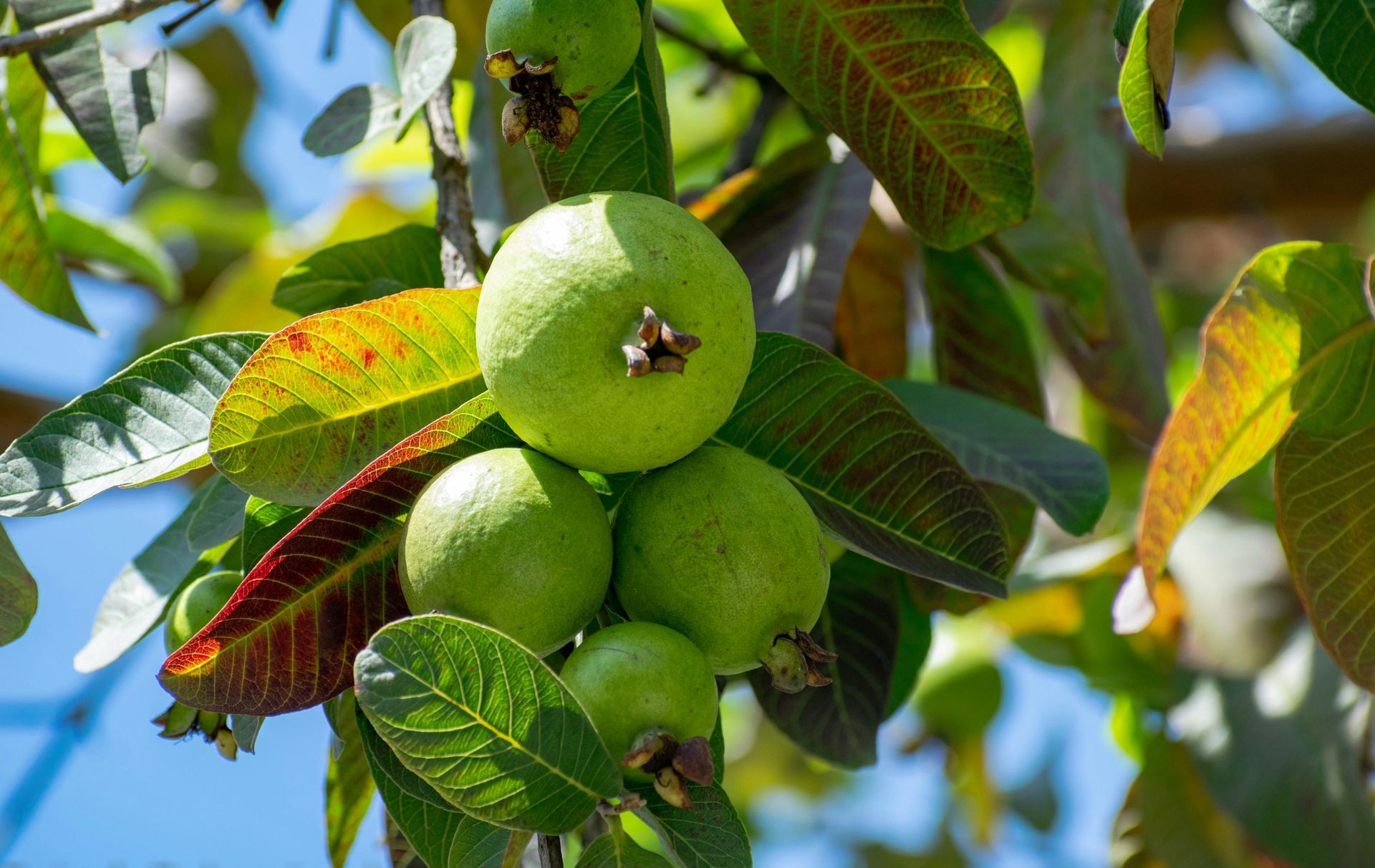
9. Enjoying Your Guavas
Fresh guava is delicious, but you can also use it in various recipes or store it for later use.
Eating Fresh: Wash the fruit and eat it fresh, either by biting into it like an apple or cutting it into slices.
Recipes: Guava is popular in jams, juices, smoothies, and desserts.
Storing: Guavas can be stored in the fridge for up to a week or frozen for longer storage.
Conclusion
Growing a guava tree is rewarding, especially since it can produce fruit in just a few years. With regular watering, feeding, and a little pruning, you can enjoy sweet, homegrown guavas. Start your guava-growing journey today, and soon you’ll be picking fresh fruit from your own backyard!
